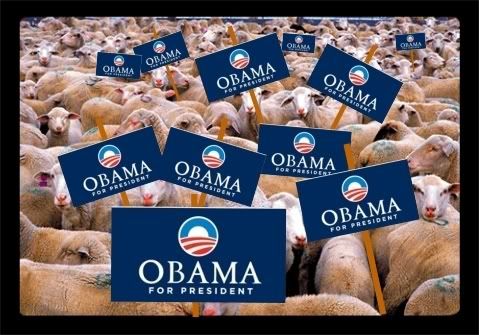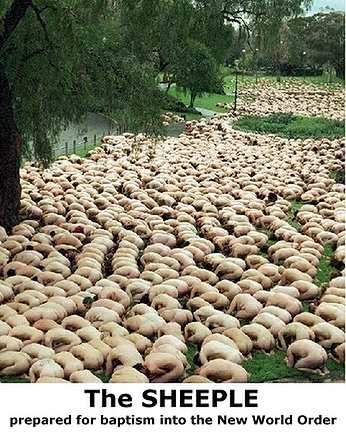Fragging Bob:
Bob Kerrey, CIA War Crimes,
And The Need For A War Crimes Trial
by Douglas Valentine
By now everybody knows that former Senator Bob Kerrey led a seven-member team of Navy Seals into Thanh Phong village in February 1969, and murdered in cold blood more than a dozen women and children.
What hardly anyone knows, and what no one in the press is talking about (although many of them know), is that Kerrey was on a CIA mission, and its specific purpose was to kill those women and children. It was illegal, premeditated mass murder and it was a war crime.
And it's time to hold the CIA responsible. It's time for a war crimes tribunal to examine the CIA's illegal activities during and since the Vietnam War.
War Crimes As Policy
War crimes were a central was part of a CIA strategy for fighting the Vietnam War. The strategy was known as Contre Coup, and it was the manifestation of a belief that the war was essentially political, not military, in nature. The CIA theorized that it was being fought by opposing ideological factions, each one amounting to about five percent of the total population, while the remaining ninety percent was uncommitted and wanted the war to go away.
According to the CIA's mythology, on one side were communist insurgents, supported by comrades in Hanoi, Moscow and Peking. The communists fought for land reform, to rid Vietnam of foreign intervention, and to unite the north and south. The other faction was composed of capitalists, often Catholics relocated from North Vietnam in 1954 by the CIA. This faction was fighting to keep South Vietnam an independent nation, operating under the direction of quiet Americans.
Caught in the crossfire was the silent majority. The object shared by both factions was to win these undecided voters over to its side.
Contre Coup was the CIA's response to the realization that the Communists were winning the war for the hearts and minds of the people. It also was a response to the belief that they were winning through the use of psychological warfare, specifically, selective terror * the murder and mutilation of specific government officials.
In December 1963, Peer DeSilva arrived in Saigon as the CIA's station chief. He claims to have been shocked by what he saw. In his autobiography, SubRosa, DeSilva describes how the VC had "impaled a young boy, a village chief, and his pregnant wife on sharp poles. To make sure this horrible sight would remain with the villagers, one of the terror squad used his machete to disembowel the woman, spilling he fetus onto the ground."
"The Vietcong," DeSilva said, "were monstrous in the application of torture and murder to achieve the political and psychological impact they wanted."
But the methodology was successful and had tremendous intelligence potential, so DeSilva authorized the creation of small "counter-terror teams," designed "to bring danger and death to the Vietcong functionaries themselves, especially in areas where they felt secure."
How Counter-Terror Worked In Vietnam
Thanh Phong village was one of those areas where Vietcong functionaries felt secure. It was located in Kien Hoa Province, along the Mekong Delta. One of Vietnam's most densely populated provinces, Kien Hoa was precariously close to Saigon, and is criss-crossed with waterways and rice paddies. It was an important rice production area for the insurgents as well as the Government of Vietnam, and thus was one of the eight most heavily infiltrated provinces in Vietnam. The estimated 4700 VC functionaries in Kien Hoa accounted for more than five percent of the insurgency's total leadership. Operation Speedy Express, a Ninth Infantry sweep through Kien Hoa in the first six months of 1969, killed an estimated 11,000 civilians-supposedly VC sympathizers.
These functionaries formed what the CIA called the Vietcong Infrastructure (VCI). The VCI consisted of members of the People's Revolutionary Party, the National Liberation Front, and other Communist outfits like the Women's and Student's Liberation Associations. Its members were politicians and administrators managing committees for business, communications, security, intelligence, and military affairs. Among their main functions were the collection of taxes, the recruitment of young men and women into the insurgency, and the selective assassination of GVN officials.
As the CIA was well aware, Ho Chi Minh boasted that with two cadre in every hamlet, he could win the war, no matter how many soldiers the Americans threw at him.
So the CIA adopted the Ho's strategy-but on a grander and bloodier scale. The object of Contre Coup was to identify and terrorize each and every individual VCI and his/her family, friends and fellow villagers. To this end the CIA in 1964 launched a massive intelligence operation called the Provincial Interrogation Center Program. The CIA (employing the US company Pacific Architects and Engineers) built an interrogation center in each of South Vietnam's 44 provinces. Staffed by members of the brutal Special Police, who ran extensive informant networks, and advised by CIA officers, the purpose of the PICs was to identify, through the systematic "interrogation" (read torture) of VCI suspects, the membership of the VCI at every level of its organization; from its elusive headquarters somewhere along the Cambodian border, through the region, city, province, district, village and hamlet committees.
The "indispensable link" in the VCI was the District Party Secretary * the same individual Bob Kerrey's Seal team was out to assassinate in its mission in Thanh Phong.
Frankenstein's Monster
Initially the CIA had trouble finding people who were willing to murder and mutilate, so the Agency's original "counter-terror teams" were composed of ex-convicts, VC defectors, Chinese Nungs, Cambodians, Montagnards, and mercenaries. In a February 1970 article written for True Magazine, titled "The CIA's Hired Killers," Georgie-Anne Geyer compared "our boys" to "their boys" with the qualification that, "Their boys did it for faith; our boys did it for money."
The other big problem was security. The VC had infiltrated nearly every facet of the GVN-even the CIA's unilateral counter-terror program. So in an attempt to bring greater effectiveness to its secret war, the CIA started employing Navy Seals, US Army Special Forces, Force Recon Marines, and other highly trained Americans who, like Bob Kerrey, were "motivationally indoctrinated" by the military and turned into killing machines with all the social inhibitions and moral compunctions of a Timmy McVeigh. Except they were secure in the knowledge that what they were doing was, if not legal or moral, fraught with Old Testament-style justice, rationalizing that the Viet Cong did it first.
Eventually the irrepressible Americans added their own improvements. In his autobiography Soldier, Anthony Herbert describes arriving in Saigon in 1965, reporting to the CIA's Special Operations Group, and being asked to join a top-secret psywar program. What the CIA wanted Herbert to do, "was to take charge of execution teams that wiped out entire families."
By 1967, killing entire families had become an integral facet of the CIA's counter-terror program. Robert Slater was the chief of the CIA's Province Interrogation Center Program from June 1967 through 1969. In a March 1970 thesis for the Defense Intelligence School, titled "The History, Organization and Modus Operandi of the Viet Cong Infrastructure," Slater wrote, "the District Party Secretary usually does not sleep in the same house or even hamlet where his family lived, to preclude any injury to his family during assassination attempts."
But, Slater added, "the Allies have frequently found out where the District Party Secretaries live and raided their homes: in an ensuing fire fight the secretary's wife and children have been killed and injured."
This is the intellectual context in which the Kerrey atrocity took place. This CIA strategy of committing war crimes for psychological reasons * to terrorize the enemy's supporters into submission * also is what differentiates Kerrey's atrocity, in legal terms, from other popular methods of mass murdering civilians, such as bombs from the sky, or economic boycotts.
Yes, the CIA has a global, illegal strategy of terrorizing people, although in typical CIA lexicon it's called "anti-terrorism."
When you're waging illegal warfare, language is every bit as important as weaponry and the will to kill. As George Orwell or Noam Chomsky might explain, when you're deliberately killing innocent women and children, half the court-of-public-opinion battle is making it sound legal.
Three Old Vietnam Hands in particular stand out as examples of this incestuous relationship. Neil Sheehan, CIA-nik and author of the aptly titled Bright Shining Lie, recently confessed that in 1966 he saw US soldiers massacre as many as 600 Vietnamese civilians in five fishing villages. He'd been in Vietnam for three years by then, but it didn't occur to him that he had discovered a war crime. Now he realizes that the war crimes issue was always present, but still no mention of his friends in the CIA.
Former New York Times reporter and author of The Best and The Brightest, David Halberstam, defended Kerrey on behalf of the media establishment at the New School campus the week after the story broke. CIA flack Halberstam described the region around Thanh Phong as "the purest bandit country," adding that "by 1969 everyone who lived there would have been third-generation Vietcong." Which is CIA revisionism at its sickest.
Finally there's New York Times reporter James Lemoyne. Why did he never write any articles linking the CIA to war crimes in Vietnam?
Because his brother Charles, a Navy officer, was in charge of the CIA's counter-terror teams in the Delta in 1968.
Read more here:
http://www.counterpunch.org/valentine.html













